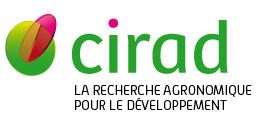Assessment of the processing ability of improved cassava varieties into a traditional food product (“bâton de manioc”) in Cameroon. SP24-18
Bouniol A., Prin L., Kirscht H., Dufour D., Tran T., Hanna R., Fotso-Kuate A., Fliedel G.. 2015. In : Starch Update 2015. Bangkok : BIOTEC, 1 p.. International Conference on Starch Technology. 8, 2015-12-03/2015-12-04, Bangkok (ThaГЇlande).
New cassava varieties were developed by IITA in order to improve their agronomic yield, pest and disease resistance, and micronutrient content (higher beta-carotene and other carotenoids). This study assessed the ability of 18 new released varieties to produce a traditional cassava food product named “bâton de manioc” in Cameroon central region, in order to maximize their chances of adoption by processors and consumers. Bâton is a steamed cassava mash wrapped in leaves of Megaphrynium macrostachyum, or leaves of other species of Marantaceae. The successive steps of the traditional process were described in details and data on processing yields, material balances, shaping and cooking conditions, as well as production capacity and product quality, were reported. Results showed that “bâton” with both better quality and productivity were obtained from varieties with lower fibre content and larger size of roots. The best profitability was obtained with varieties longer than 25 cm, with a diameter comprised between 6 and 9 cm and a weight comprised between 0.8 and 1.4 kg. Additionally, a survey with processors highlighted the desired quality criteria for cassava varieties to make a good “bâton”. Eight varieties out of the 18 were finally identified as able to be processed into a good “bâton”. Their acceptability by a large number of Cameroonian consumers will be tested in a further study. Beyond these initial results, the originality of the approach was to assess performance and quality criteria for cassava processing in local conditions, which appears very effective to ensure that improved varieties have appropriate characteristics for traditional uses, and also to integrate market and consumers' demands early in varietal improvement programs.
Documents associГ©s
Communication de congrГЁs
Agents Cirad, auteurs de cette publication :
- Bouniol Alexandre — Persyst / UMR QUALISUD
- Dufour Dominique — Persyst / UMR QUALISUD
- Tran Thierry — Persyst / UMR QUALISUD
